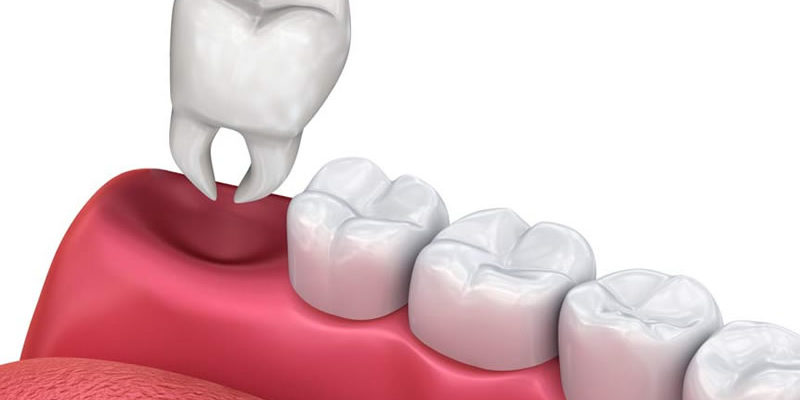Reasons for Tooth Extractions
There are several reasons why our dentist may recommend that you get a tooth extraction near you, including:
- Malpositioned teeth: to avoid potential complications that may eventually result in a negative impact on your oral health, our periodontist in Kelowna may recommend removing maligned teeth.
- Extra teeth: some patients have too many teeth to fit in their jaw, preventing other teeth from erupting.
- Severe tooth damage: some teeth are so severely decayed or damaged that it is not possible for our dentist to repair them. For instance, teeth affected by advanced periodontal disease may need to be extracted. As gum disease progresses, the teeth loosen to an extent to where extraction is the only solution.
- Orthodontic treatment: orthodontic treatments, such as braces, may require the extraction of some teeth to make the necessary space for teeth to properly align.
- Chemotherapy: chemotherapy weakens the immune system, increasing the risk of infected teeth and leading to the need for extractions.
- Radiation: if a patient requires head and neck radiation therapy, our periodontist near you may need to extract some teeth in the area of radiation to help avoid complications with your oral health, such as infection.
Types of Tooth Extractions
- Simple tooth extractions: these are performed on teeth that can be seen above the gum line. Simple tooth extractions are usually done under a local anesthetic, but if you are especially anxious, our dentist can also provide you with some sedation to help you relax.
- Surgical tooth extractions: these are performed on teeth that cannot be seen above the gum line, either because they have not yet fully erupted or they have broken off at the gum line. Either performed by our dentist or an oral surgeon, surgical tooth extractions require some form of surgical procedure such as lifting back the gum tissue, breaking the tooth into smaller pieces, or removing bone. Surgical extractions are performed under a local anesthetic or general anesthesia, depending on how extensive the procedure is.
What to Expect During Tooth Extraction Procedures
When you visit Okanagan Perio for an extraction appointment, the process will begin with our dentist numbing the area in which the tooth will be extracted.
For simple extractions, our dentist will use a tool to grasp the tooth and gently wiggle it back and forth until it is loose enough to lift out of the socket.
For surgical extractions, our dentist will most often create a small incision in your gums to reach the affected tooth. They will then use tools such as extraction forceps to reach the tooth and remove it. Sometimes, a tooth is so firmly planted in the socket that our dentist must break the tooth into pieces to remove each portion individually. To complete the procedure, our dentist will suture the area closed and add a gauze pad to help control any bleeding.
Want to Learn More About Tooth Extractions?
If you require tooth extractions and want to know more about the process and aftercare, please contact our team at Okanagan Perio. We are happy to address any questions or concerns you may have about this procedure.

